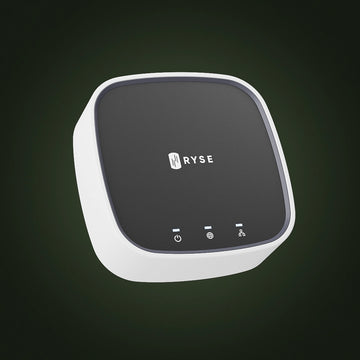Sleep is one of the most essential elements for our health and well-being. Yet, many people struggle to maintain a consistent sleep schedule. From irregular work hours to too much screen time, modern life makes it challenging to get restful sleep night after night. Fortunately, small adjustments to your routine, exposure to natural light, and smart home technology can help regulate your body’s internal clock and improve sleep quality.
Importance of Routine and Light Exposure
Our bodies follow a circadian rhythm, an internal 24-hour clock that tells us when to sleep, eat, and be active. One of the strongest signals for this clock is light exposure.
- Morning sunlight: Exposure to bright natural light in the morning helps signal to your body that it’s time to be alert and boosts your energy for the day.
- Evening dimming: Reducing light in the evening, especially blue light from screens, helps your body prepare for sleep by releasing melatonin, the sleep hormone.
Tips for optimizing light exposure:
- Step outside for at least 20–30 minutes each morning to reset your circadian rhythm.
- Avoid bright screens 1–2 hours before bedtime. Use blue-light filters if necessary.
- Dim the lights at home in the evening and consider using Ryse smart blinds to gently block or filter light, creating a sleep-friendly environment.
Why routine matters:
Going to bed and waking up at the same time every day, even on weekends helps reinforce your internal clock. Over time, your body will anticipate sleep, making it easier to fall asleep naturally. Ryse smart blinds can help maintain this consistency by automatically adjusting your bedroom lighting to match your schedule.
How Smart Blinds Can Regulate Your Circadian Rhythm
You might not realize it, but window coverings can play a huge role in your sleep quality. Smart blinds allow you to control how much natural light enters your bedroom, creating an environment that supports your circadian rhythm.
How smart blinds help:
- Morning wake-up: Smart blinds can gradually open to mimic a natural sunrise, gently waking you without a jarring alarm.
-
Evening relaxation: Close blinds at a set time to block out outside light and signal to your body that it’s time to wind down
- Shift workers: Create a dark environment during daytime sleep, reducing disruptions and improving rest.
By automating light exposure, Ryse smart blinds help your body stay in sync with its natural sleep-wake pattern.
Tips for Anchoring Sleep and Wake Times (Even for Shift Workers)
Maintaining a consistent sleep schedule can be especially challenging for shift workers or anyone with irregular routines. However, by anchoring your sleep and wake times, you can help your body stay in sync with its natural circadian rhythm even when your schedule isn’t standard.
Here are practical Tips to achieve this:
Set a Consistent Sleep Window
Aim for 7–9 hours of sleep each day, and try to stick to roughly the same bedtime and wake-up time, even if your shifts rotate. For example, if you work nights, try to go to bed immediately after your shift ends and wake up at the same time every day even on days off. This helps your body anticipate sleep, making it easier to fall asleep and wake up naturally.
Create a Dark, Quiet Sleep Environment
Light and noise can significantly disrupt sleep. Use Ryse smart blinds to block sunlight when sleeping during the day. Noise-cancelling devices, fans, or white-noise machines can also help create a calm environment. A bedroom that feels dark and quiet signals your body that it’s time to rest, improving
Use Light Strategically
Exposure to light is one of the most powerful ways to regulate your body clock. Bright light during waking hours helps keep you alert, while darkness signals it’s time to wind down. Ryse smart blinds can automate this process, opening gradually in the morning to simulate a natural sunrise, or closing at a set time in the evening to cue your body that it’s time to sleep. This automation makes it easier to stick to a schedule without relying solely on alarms.
Anchor “Anchor Days”
Even if your shifts rotate, try to keep at least one element of your sleep schedule consistent, such as a regular wake-up time or bedtime. This creates a reference point for your body clock and helps maintain stability, making it easier to adjust when your schedule changes.
By implementing these strategies, even the most irregular schedules become more manageable. Tools like RYSE SmartShades make it simple to maintain a consistent sleep and wake cycle, helping your body stay aligned with natural rhythms for better sleep and overall well-being.
FAQs
Q1: How long does it take to normalize a disrupted sleep schedule?
A: It usually takes 1–3 weeks, depending on consistency and light exposure management.
Q2: Can smart blinds really improve sleep quality?
A: Yes! Ryse smart blinds help regulate your circadian rhythm by controlling natural light exposure, making it easier to fall asleep naturally.
Q3: What strategies help shift workers sleep during the day?
A: Block sunlight using Ryse smart blinds, limit noise, and anchor one consistent sleep or wake time daily. Bright light exposure during waking hours helps reinforce alertness.
Q4: How important is morning sunlight?
A: Crucial! Morning sunlight resets your circadian clock, boosting alertness and preparing your body for restful sleep. Ryse smart blinds can simulate natural light if sunlight isn’t available.







